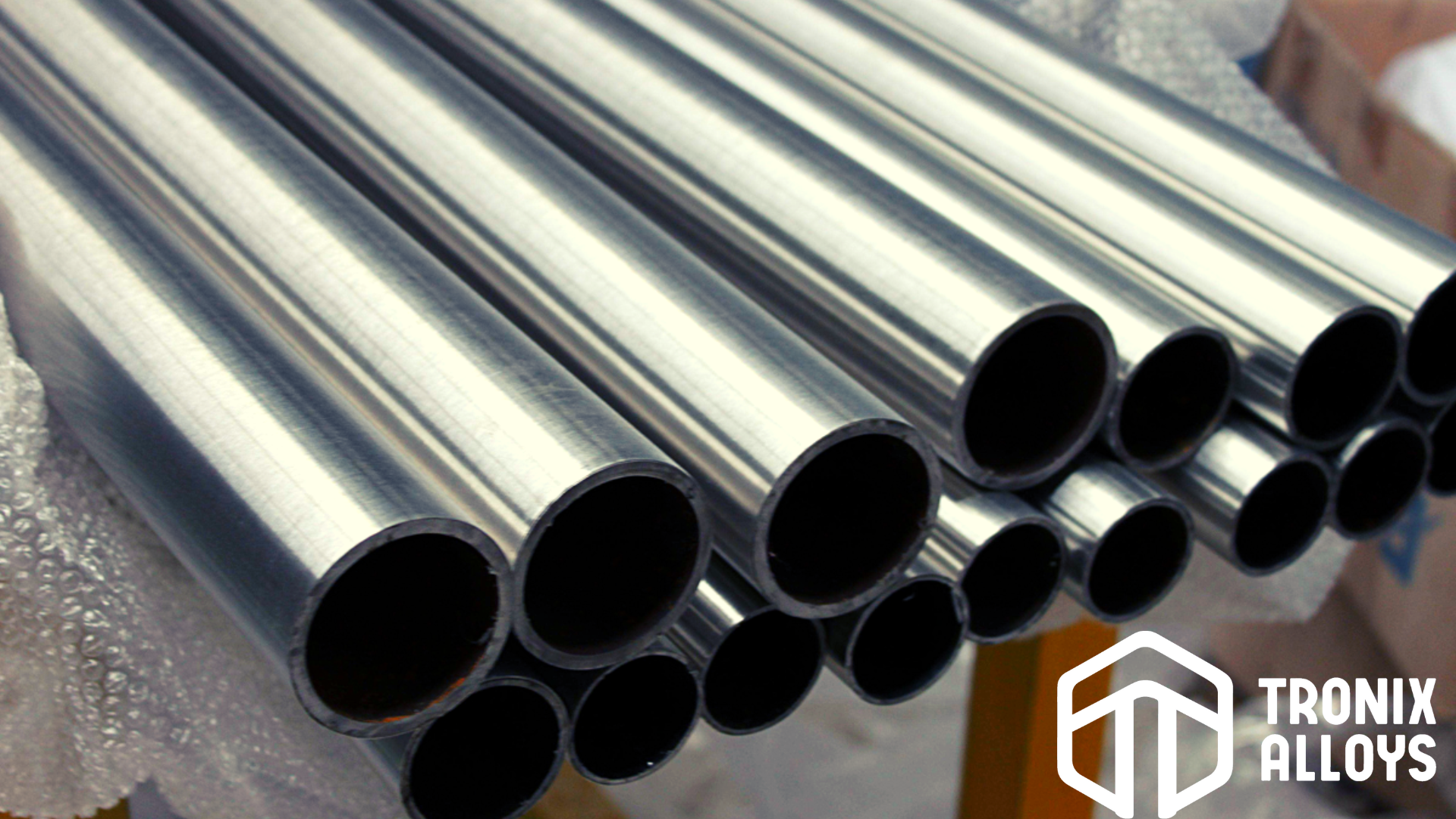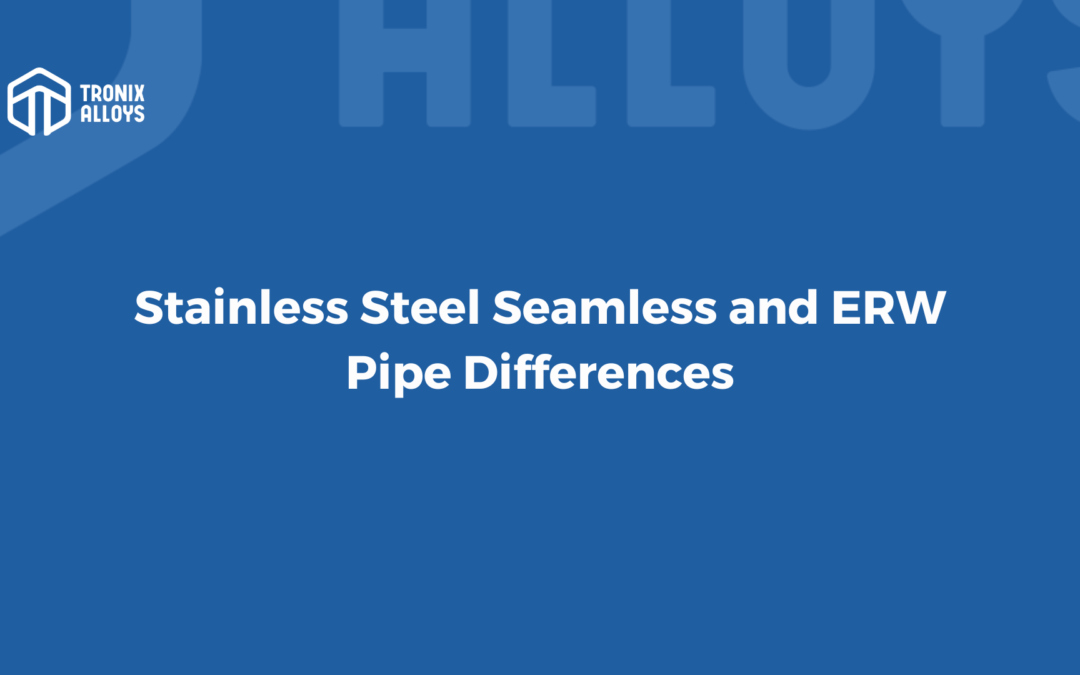A large proportion of all pipes in the piping industry are seamless or made via welding or ERW. The main difference between seamless and erw pipes is, Seamless pipes are manufactured without welds or seams, while erw pipes are manufactured by welding longitudinally formed steel pieces together. What is erw pipe? Coils and strips of steel are used for welding erw pipes or electric resistance welded pipes. Pipes in this category can be ordered in lengths up to 24 inches outside diameter and are extremely durable. Both seamless and erw pipe are well suited for harsh conditions, as has been forgotten in the mix of seamless and erw pipe. Compared to ERW pipes, seamless pipes are more expensive, but they last for a long period of time in these conditions. Using only the highest quality materials, our products are produced under the strict guidance of our experienced employees. As a leading supplier and manufacturer of erw pipe and seamless pipe in the country, we serve customers throughout the country. All of these products are available at reasonable prices.
Since experts have often claimed that ERW pipes are weaker than seamless pipes, the meaning of ERW Steel pipes has always been obscured. A cold rolling procedure follows the hot rolling process to provide superior corrosion and oxidation resistance properties to the erw pipe. A high-pressure and low-pressure system can be fitted with these pipes. You can choose between plain tubing ends, threaded tubing ends, and beveled tubing ends. It is easy to customize the shapes and sizes of these unique pipes to suit your requirements.
The use of erw pipe meaning is that investors are looking at a cost-effective option that is highly reliable and lasts for a long time without requiring major repairs. In addition to being able to be formed and machined easily, these pipes can also be welded. There will continue to be debated between experts and people in the piping world regarding the difference between erw and seamless pipes. Whether you want to get the best deal on these pipes or you want to find all your requirements under one roof, we are your one-stop destination. We welcome your questions or visits if you are interested in our pipe erw or any other of our products.
For carbon steel pipes made to API specifications, seamless or electric-weld supplying processes are used. What is the seamless pipe? A seamless pipe is different from an ERW pipe in a number of ways. In general, Seamless Piping is produced by hot-working steel or, if required, by cold-finishing the hot-worked product to produce the desired shape, dimensions, and properties. It is necessary to heat-treat electric weld pipe seams after welding to a minimum temperature of 1,000°F or to process it in such a way as to prevent untempered martensite from discoloring.
Regardless of the method used, raw material is the first cast into ingots in both seamless and erw methods. A seamless tube is made by stretching out the steel and welding the edges together or forcing them together to make a pipe. There is no doubt that welded pipe has a seam that makes it somewhat weaker than pipe supplied by other techniques, but quality assurance regimens have improved to the point where pipe welded by erw has generally performed as intended when its tolerances are met.
What is the difference between erw and the seamless pipe?
In spite of the name of the material referred to as seamless pipe, pipes in this category are generally designed without any weld seams. The surface of welded pipes has a longitudinal weld seam in its construction. In addition to the method of construction, there are also differences between different kinds of pipes in terms of pressure capacity, cost, and the type of application they serve.
This type of pipe is manufactured by solid round billets and is not welded or joined and is manufactured from solid round billets. It is manufactured to meet specific dimensional and wall thickness specifications in sizes ranging from 1/8 inch in diameter to 26 inches in outside diameter. Suitable for applications that require high-pressure operation, such as Hydrocarbon Industries and Refineries, Oil and Gas Exploration & Drilling, Oil & Gas Transportation, Bearings, Boilers, Automobiles, Bearings and Hydraulic Cylinders.

The cost difference between seamless and erw pipes
The cost of seamless pipes is always higher than that of welded pipes because seamless pipes require a longer manufacturing process, and there are a lot of operations involved in the manufacturing process. It is a relatively simple process to create ERW pipes, and as such, it has a fraction of the cost compared to seamless pipes. Cold-formed sheets are then welded together via high-frequency welding, which results in a relatively quick process that is relatively simple.
Why use seamless pipes instead of erw pipes?
The use of seamless pipes has two advantages. The first advantage of seamless pipes is that they have a 20% higher working pressure capacity than an ERW pipe, as, unlike ERW pipes, the application of higher pressure levels will not cause the pipe to fail or burst. In addition, one other, more popular reason for choosing seamless pipes is that they are not susceptible to intergranular corrosion, which is another reason to choose seamless pipes. In contrast to seamless pipes, welded pipes have a seam line that gets affected, particularly the HAZ or hot weld zone at the grain boundary due to sensitization. The intergranular corrosion is thus facilitated, which makes the erw pipe weaker because it weakens the pipe.
Why choose seamless pipe for the Oil & Gas sectors?
A seamless pipe is the best choice for all high-pressure applications. It is particularly suitable for oil and gas applications where the flow of media through the system exerts high forces, especially at high temperatures, so seamless pipes are a great choice. As a result, pipes are put under tremendous pressure when a combination of this force and an increase in temperature occurs. As compared to seamless pipes, seamless pipes have a 20% higher capacity to bear pressure, making them ideal for oil and gas applications.
Seamless and erw pipe manufacturing process
By cold-forming a sheet of steel into the shape of a cylinder, electrical resistance welded pipe, or simply ERW pipe can be produced. The welded steel sheet is then heated to such an extent that the edges of the steel sheet are forced to form a bond simultaneously. This bond is formed by passing an electric current between the edges of the steel sheet, which then is heated to a temperature that heats them to a temperature at which they are forced synchronously. In this welding process, the bond is formed without the use of welding filler material. In order to achieve a high-quality weld, it is considered that the most practically viable option is to use an electro-welded (ERW) process with a high frequency.
In contrast to the manufacture of welded pipes, the manufacturing of seamless pipes takes more time and effort. To accomplish this final product, a number of operations are undertaken including heating the raw steel, casting it into solid billets, and finally using heat in combination with several other processes. As soon as the raw steel alloy has been molded into the shape of a cylinder, it is then rolled until a stretched and hollowed product is formed. It is interesting to note that the center of this newly created product is irregularly shaped. As a process to achieve a smoother surface and a more uniform shape hollow, it is common practice to lay a bullet-shaped piercer point along the center of the billet as it is being rolled to get a more even surface and shape hollow.
How to Identify Stainless Steel Seamless Pipe or ERW?
Various specifications are used for the production of pipes, but when ASTM A53 is used in the fabrication of the pipes, the pipes are marked by stenciling. If the stencil print indicates Type S, the pipe is seamless. However, if the pipe is a seamless construction, the pipe is marked by stenciling. It is, however, important to note that if Type E is stenciled onto the pipe, it indicates that the pipe has been electrically resisted welded. Another method to confirm that the pipe has been welded is to conduct a UV inspection. Various specifications are used for the production of pipes, but when ASTM A53 is used in the fabrication of the pipes, the pipes are marked by stenciling. If the stencil print indicates Type S, the pipe is seamless. However, if the pipe is a seamless construction, the pipe is marked by stenciling. It is, however, important to note that if Type E is stenciled onto the pipe, it indicates that the pipe has been electrically resisting welded. Another method to confirm that the pipe has been welded is to conduct a UV inspection
Raw material difference
Seamless stainless steel pipes are manufactured from round billets of steel, while ERW stainless steel pipes are manufactured from hot-rolled coils of steel. Even though both the raw materials are completely different, it is important to note that the quality of the end product – pipes – is entirely determined by both factors – quality control during the manufacturing process as well as the condition and quality of the raw materials in the beginning. It is important to note that these two pipes are manufactured in different stainless steel grades, but the most common one is stainless steel 304 pipes.
Size difference
The seamless stainless steel pipes are completely finished on the assembly line and can be manufactured up to 26 inches in diameter on the outside diameter side. However, despite the fact that even the most advanced steel companies use ERW techniques to produce steel, they can only work with diameters up to 24 inches.
Welding process difference
Due to the fact that seamless pipes are extruded, they don’t have any sort of joint, either in the axial or radial direction, due to their extrusion method. It should be noted that ERW pipes are manufactured by bending coils along their central axis and, therefore, they are welded throughout their entire length.
Application difference
It is generally accepted that seamless pipes are used for applications that require high pressure, while ERW pipes are used in applications that require low and medium pressures.
Due to the inherent safety properties of seamless pipes, they are widely used, for instance, in applications in the oil and gas industry, refineries, and other chemical industries, where personnel and plant safety must be ensured through zero leakage policies, as a result of the inherent safety features of seamless pipes. It is worth mentioning that well-manufactured ERW pipes under strict quality control can also be used in similar applications other than the routine ones like water transportation, scaffolding, and fencing.
Finished product difference
A well-known fact is that the internal finish of ERW pipes is always maintained through the use of good quality control techniques, so they are always superior to seamless pipes when it comes to their internal finish.


A seamless pipe is manufactured by extruding metal to the intended length. Therefore, ERW pipe has a welded joint in its cross-section, whereas seamless pipe has no joint in its cross-section.
ERW and seamless steel pipe manufacturing have both been around for decades, but their methods have evolved over time.
By using erw pipe, investors are looking for a cost-effective option that is highly reliable and lasts for a long time without requiring major repairs. These pipes can be formed and machined easily, as well as welded.
A cold rolling procedure follows the hot rolling process to provide superior corrosion and oxidation resistance properties to the erw pipe.
A seamless pipe is different from an ERW pipe in a number of ways.